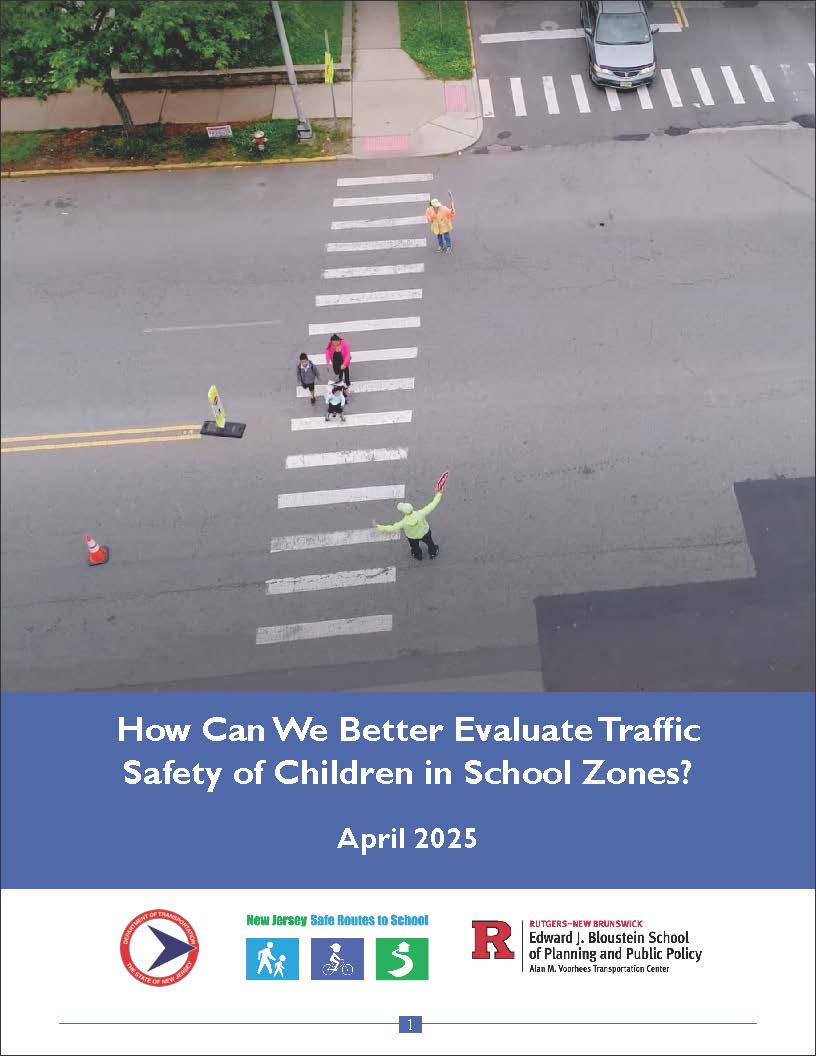The NJDOT Safe Routes to School Resource Center has released a new report, “How Can We Better Evaluate Traffic Safety of Children in School Zones?” This report examines traditional methods of evaluating school zone infrastructure projects and explores ways to improve safety assessments through speed studies and the Safe System Approach.
Evaluating Safety Improvements and Infrastructure Project Effectiveness
The report highlights the role of excessive speed in crashes and assesses the presence of traffic calming measures in school zone infrastructure improvements. Researchers analyzed completed infrastructure improvement projects aimed at making walking and bicycling safer in school zones and found that many lacked speed reduction measures, even though school zone speed limits are typically 25 mph or lower. In some cases, newly constructed or refurbished sidewalks may have inadvertently increased vehicle speeds and risks due to the absence of additional safety enhancements, such as traffic calming features at crosswalks. To improve project effectiveness, the report recommends incorporating speed studies and Safe System Approach strategies to better manage vehicle speeds.
Report Highlights
Review of School Zone Infrastructure Projects
- The report examines completed school zone infrastructure projects from 2012 to 2014 and evaluates the implementation of traffic calming features.
- A case study highlights a sidewalk construction project in a school zone where post-construction speed data showed increased vehicle speeds.
Conducting Speed Studies
The report discusses several methods for conducting speed studies, including:
- Radar and LiDAR devices – These provide real-time speed data but may influence driver behavior when roadside displays are visible.
- Pneumatic road tubes – These count passing vehicles but may be less accurate in adverse weather or on roads with high volumes of trucks or buses.
Safe System Approach Integration
- The report encourages integrating Safe System Approach goals into infrastructure projects to prioritize safety and support zero-death initiatives aimed at eliminating road fatalities.
Conclusion
The report emphasizes the importance of reducing speeds and improving school zone safety through more effective motor vehicle speed measurement practices. School zone infrastructure improvements should incorporate traffic calming measures such as medians, curb extensions, narrower lanes, bike lanes, and road diets, alongside sidewalk enhancements, to maximize safety benefits for students walking and bicycling.
For the full report, click here.

